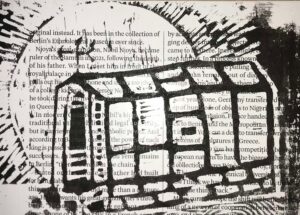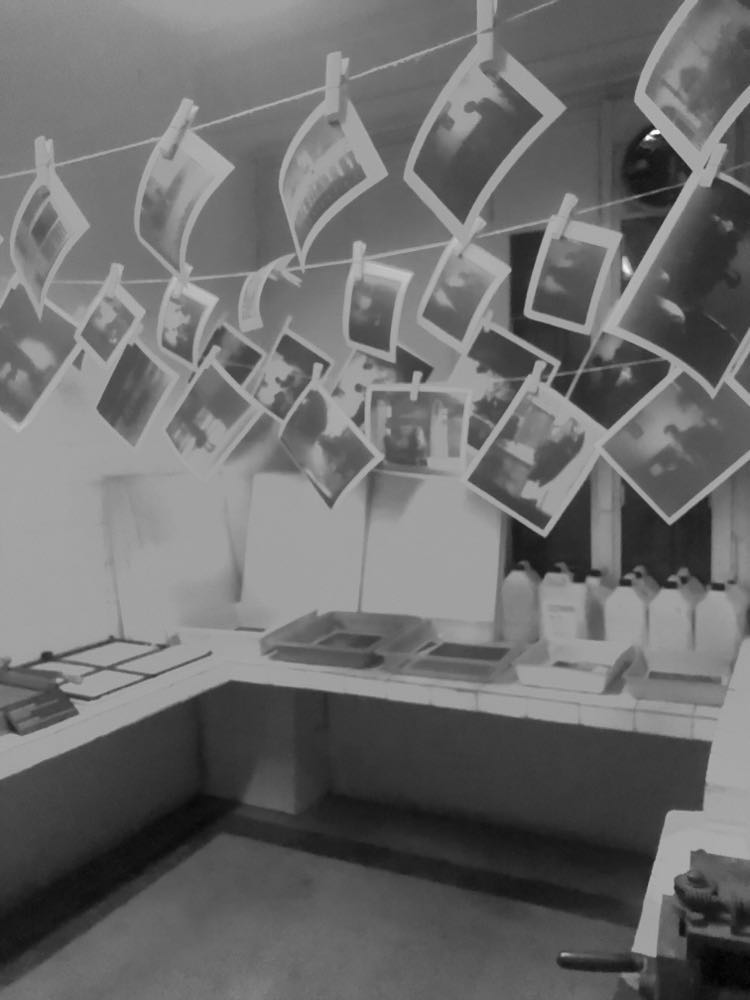


In Greek mythology Argos Panoptes was known as ‘the all-seeing’ giant. Hundreds of eyes adorned his body, some of which were always awake. When Jeremy Bentham designed the Panopticon prison he understood that when people believe they are under constant surveillance they can be controlled even if no one is watching. The tower in the centre made it possible to look into every cell, this visibility becoming a trap, the prisoner can always see the tower but never knows where they are being observed from. Bentham saw this model as the solution to social disorder, if people were constantly self-disciplining there would be no need for arbitrary means of control. From this design came the idea that power should be visible and unverified, you feel the presence of eyes but never know which ones are awake.
Foucault argues that we now live in the ‘panoptic machine’. Anybody can operate this machine, individuals become responsible for maintaining the social order, they become unwillingly caught in the mechanisms of control. According to Foucault panoptic surveillance makes every apparatus of power more intense, in its reach, efficiency sometimes its subtly. While the central tower may no longer exist the impact of its constant surveillance has become diffused among the populace. Bentham recognised that the excellence of his prison ‘consists in the great strength it is capable of giving to any institution’, it has been used as a proxy for power. This design has spread throughout the social body , you see it in lecture theatres centred around your teacher, on busses where you sit opposite people, in strangers pockets which hide cameras designed to record. Throughout history the panoptic machine has been enforced by governments seeking a means to control the population. Famously the Gestapo used these tactics, I recently learnt about their Albanian equivalent, the Sigurimi.
The House of Leaves is a pretty building that holds dark secrets. A period of Albanian history that has been left to decay the minds of those who survived it. On the wall of the entrance, it reads “This museum is dedicated to those innocent people who were spied on, arrested, prosecuted, convicted and executed during the communist regime,”. It is a museum but functions as a memorial, names of prisoners line the walls, white letters on black to create a picture of a reality where not all that is erased has been forgotten. In one anecdote a woman explains how the Sigurmi broke into her house one day to arrest her husband , for a crime he didn’t know he had committed. With her husband they also took every photo that he was in. Family portraits, childhood photos, pictures from school. Images of him now only exist in the minds of his loved ones. His face was never seen again, lost but not forgotten. A good museum shows people a world that is otherwise hidden. A world that was erased from the books of history, like a person from a photo. The house of leaves exposes the surveillance techniques used by the secret police, giving you an insight into the underworld of communist Albania.
“kujes te deshur vizltore kjo dhome eshtee pergjuar”, “attention dear guests this room is bugged”. Once you pass the buildings leaf cladded exterior you enter a space that feels shocking. It is a rare experience to learn about history in the same area it took place, by putting yourself in that time period you are not just a passive observer but actively engaged. The house of leaves was the headquarters of the Sigurimi during the communist period (1944 – 1991). For over 30years it was a building shrouded in mystery, its past only recently exposed to the public. The museum takes you on a journey, its multiple rooms revealing different edifices of the Sigurmi’s mechanism of control. Fear was the main device used to create a population forced into passivity, fear followed people around like the many eyes of Argos Panoptes . You could feel it sometimes, if you were able to find a bug strategically placed in your shoes, hairclips, jackets, phones, bags. Hear it in public bathrooms which were the only safe places to share political thoughts. The 6,000 people who were executed without a trial would have felt it as they took their last breath still wondering what their crime was. The 18,000 people imprisoned, 30,000 sent to forced labour camps would have seen it everyday , if not in themselves then those sleeping next to them. The loved ones left behind probably still feel it. The fear of not knowing what happened or why. Fear was everywhere but the source of it was secretive. People would be arrested but not know how. The Sigurmi used panoptic surveillance to intimidate the population even when they were not present. A society stuck in in their shadows due to very real or perceived threat of being seen. The word Sigurmi was only whispered, people afraid that to speak it out loud would summon them like it had many times before. Like a panoptic prison you never knew who was watching or listening. Citizens confined to the cell of their own thoughts.
A major part of the state’s mechanism of control was their construction of ‘the enemy’. “enemies of the people”, “traitors to the homeland”, “agents of the Yugoslav UDB, the Soviet KGB, the American CIA”. Whatever the name the implication was the same – they could be anyone. Your neighbour, the person who sold you groceries this morning, the man who just nudged past you on the street. While living in this climate of suspicion people would do anything to feel a sense of safety, even become apar of the functioning panoptic machine. The Sigurimi had around 15,000 collaborators, among them 1,000 agents and 11,000 informants all over Albania. The more numerous these anonymous observers became the greater the perceived risk of being caught was, causing people to completely change their behaviour. Subjected to an abusive system many people became implicated in its violence, turning against friends and family to survive. I was speaking to Illir one morning in front of the hostel sipping a kafe. He grew up during the communist period and was 15 when the regime changed. I asked him what it was like , he said he doesn’t know , not because he can’t remember but because he was never told. Parents would not discuss what was happening with their children, keeping their thoughts locked, key hidden from the prying minds of their children. Illir said they would never confide in him in case he told his friends, and they told their friends and their friends parents. It was due to a fear that at some point the line of communication would be intercepted by someone who could do terrible things with that information. A fear of panoptes, the all-seeing secret police who were able to make their presence felt even if they were miles away.
The politics of division were effective in their cruelty, the Sigurmi destroying hope by enforcing a regime of terror. The brutality of Panoptic surveillance exits in its ability to cause its subjects to contribute to their own subjugation. They carry the violence of the state within them and in extreme cases inflict it upon others. In this situation they play both roles, victim, and perpetrator, acting as an extension of the state’s power while simultaneously trying to resist it. It’s hard to imagine the effect of this internal contradiction on someone’s personhood. Living under the heavy weight of constant observation can make you sink further into the darker aspects of human nature. The house of leaves is important in the way it positioned people back into this struggle. Rather than focusing on the ideological conflicts of the time it showed the everyday struggles of ordinary people, those implicated in the abusive system of power and those attempting to fight against it.